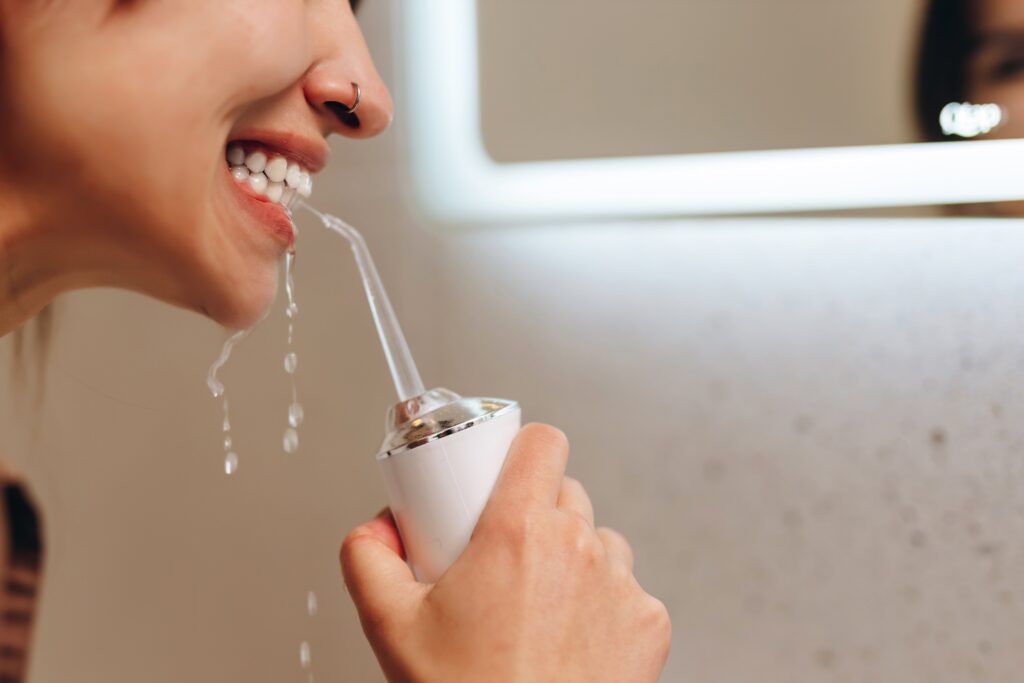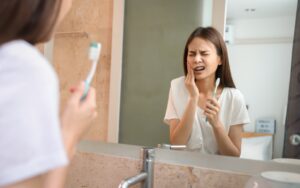Flossing: it’s an integral part of your oral hygiene ritual that shouldn’t be skipped. Traditional
string floss does the job, but what if there’s a method that not only cleans between teeth
effectively but also adds a modern twist? Enter the water flosser. At Stallings Dental, we’re here
to explore this dental device with you – understanding how it works and who could benefit the
most from its stream of features.
Table of Contents
ToggleWhat is a Water Flosser?
A water flosser, also known as an oral irrigator, is a handheld device that shoots a stream of
water into your mouth to clean between teeth and below the gumline – areas where traditional
floss can sometimes fall short. By removing trapped food particles and disrupting plaque and
bacteria, water flossers contribute significantly to your oral health routine.
The Benefits of Water Flossing
Gentle on Gums: For those with sensitive gums or conditions like gingivitis, water flossers can
provide a gentler experience than traditional floss, which can sometimes cause irritation or
bleeding if not used carefully.
Ideal for Braces: Navigating the wires and brackets of traditional braces can be a flossing
challenge. Water flossers make it easier to maintain orthodontic hygiene, effectively cleaning
around orthodontic fixtures.
Reaching Recesses: Dental work such as bridges or implants requires meticulous cleaning.
Water flossers can access and clean around these structures with greater ease than string floss.
User-Friendly: If you struggle with the technique or hand dexterity required for traditional
flossing, a water flosser is straightforward and less technique-sensitive.
How to Use a Water Flosser
Using a water flosser is simple. Fill the reservoir with warm water, choose the pressure setting
that’s comfortable for you, place the tip in your mouth, lean over the sink, and turn on the
device. Aim the water at your gumline and glide the tip along your teeth, pausing between each
tooth to let the water do its job.
Choosing the Right Water Flosser
There’s a variety of water flossers available on the market, ranging from countertop models with
various pressure settings to portable ones suitable for travel. Consider your needs, available
space, and whether you’ll be sharing the device with family members when choosing one.
Complementary, Not a Replacement
While water flossers are an effective tool for enhancing dental hygiene, they are best used in
conjunction with brushing and traditional flossing, not as a substitute. The mechanical action of
brushing and traditional flossing is still essential for comprehensive plaque removal.
What Stallings Dental Recommends
At Stallings Dental, we recommend water flossers to patients who:
- Have a difficult time using traditional floss effectively.
- Possess dental work where plaque accumulates, such as crowns, bridges, or implants.
- Are undergoing orthodontic treatment with braces.
We also emphasize the importance of continuing to brush twice daily with fluoride toothpaste
and visiting us for regular check-ups and professional cleanings.
Ensure Optimal Use
If you’re considering a water flosser or have recently started using one, let’s discuss it during
your next visit to Stallings Dental. We can provide personal recommendations and tips for
optimal use, tailored to maintain your unique smile.
The Takeaway
Embracing innovations in dental care can lead to an improved oral health routine and a brighter
smile. A water flosser might be the update your hygiene regimen needs, contributing to cleaner
teeth, healthier gums, and an ultimately happier mouth.
Water flossers are making waves in dental care – are you ready to ride the tide? Discover
whether a water flosser could elevate your oral hygiene by speaking with our Stallings Dental
team. Together, we can ensure your teeth enjoy the stream of benefits that water flossing has to
offer.




